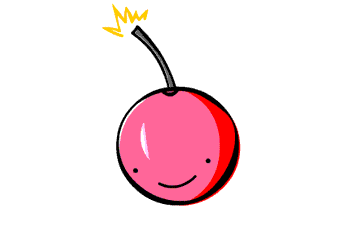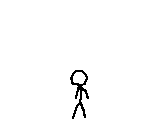By : Marsigit
Reviewed by : Syahlan Romadon (09301241041)
http://syahland.blogspot.com
Keputusan Sisdiknas No 20 tahun 2003 menegaskan bahwa Sistem Pendidikan Indonesia harus mengembangkan kecerdasan dan keterampilan individu, mempromosikan perilaku yang baik, patriotisme, dan tanggung jawab sosial, harus mendorong sikap positif dari kemandirian dan pembangunan. Meningkatkan kualitas pengajaran adalah salah satu tugas yang paling penting dalam meningkatkan standar pendidikan di Indonesia. Itu dimulai pada bulan Juni 2006, berdasarkan Keputusan Menteri No 22, 23,24 tahun 2006, Pemerintah Indonesia telah menerapkan kurikulum baru untuk pendidikan dasar dan menengah, yang disebut KTSP "Kurikulum Tingkat Satuan Pendidikan".
Berpikir matematis memiliki keanekaragaman pengetahuan yang sederhana atau keterampilan. Ini adalah bukti bahwa berpikir matematis melayani tujuan penting dalam memberikan kemampuan untuk memecahkan masalah sendiri, dan ini tidak terbatas pada masalah khusus.
Pengajaran harus fokus pada pemikiran matematika termasuk metode matematika. Pertanyaan berhubunganan dengan pemikiran matematika dan metode harus diajukan didasarkan pada perspektif jenis pertanyaan apa.
Katagiri, S. (2004) menunjukkan bahwa pertanyaan harus dibuat sehingga proses pemecahan masalah matematika memunculkan pemikiran dan metode. Dia mendaftar pertanyaan analisis yang dirancang untuk menumbuhkan pemikiran matematika yaitu mengenai masalah pembentukan dan pemahaman,membangun sebuah perspektif, pelaksana solusi, organisasi logis.
Dalam pembelajaran, para peneliti telah berusaha untuk mengungkap gambaran di mana guru diupayakan untuk mempromosikan metode matematika dalam mempelajari total luas sebuah silinder lingkaran tegak dan bola serta volume kerucut lingkaran tegak.
Hasil penelitian dapat dinyatakan bahwa metode matematika siswa dapat ditelusuri melalui skema kegiatan belajar mengajar sebagai berikut:
1.Masalah Pembentukan dan Pemahaman yang muncul ketika siswa: mengamati model tertentu dari silinder lingkaran tegak, mengamati model tertentu dari bola, dan mengamati model tertentu kerucut lingkaran tegak. Mengidentifikasi komponen-komponen dari silinder lingkaran tegak, bola, dan kerucut. Mendefinisikan konsep silinder lingkaran tegak, bola, dan kerucut. Memiliki pertanyaan dan pemberitahuan dari guru untuk mencari konsep-konsep
2. Membangun Perspektif suatu yang muncul ketika siswa : Menggunakan model beton untuk mencari total luas silinder lingkaran tegak, area bola dan volume kerucut lingkaran tegak. Belajar bahwa tinggi silinder lingkaran adalah sama dengan lebar persegi panjang tersebut; dan keliling lingkaran adalah sama dengan panjang persegi panjang. Memahami prosedur cara mencari volume kerucut lingkaran tegak.
3. Solusi Pelaksana yang muncul ketika siswa: mencoba untuk mencari tahu area lateral silinder lingkaran tegak,mencoba untuk mengetahui total luas silinder lingkaran tegak,mencoba untuk mengetahui daerah lingkup,mengumpulkan data dari pengukuran volume kerucut dibandingkan dengan volume silinder
...
Labels
About Me
hanya orang BIASA yang ingin DIAKUI
Blog archive
-
▼
2011
(39)
-
▼
December
(17)
- LESSON STUDY ON MATHEMATICAL THINKING: Developing ...
- Pembudayaan Matematika di Sekolah Untuk Mencapai K...
- Developing Teacher Training Textbooks for Lesson S...
- Lesson Study: Pendekatan Baru untuk Pembelajaran M...
- PHILOSOPHY OF MATHEMATICS EDUCATION
- Philosophical Explanation on Mathematical Experien...
- Research Activities as Effort to Improvement Profe...
- KEGIATAN PENELITIAN SEBAGAI USAHA UNTUK MENINGKATK...
- PHILOSOPHICAL AND THEORETICAL GROUND OF MATHEMATIC...
- LESSON STUDY
- “ Looking for Alternative Models in reference to J...
- WAWASAN TENTANG STRATEGI DAN APLIKASI PEMBELAJARAN...
- Stimulating Primary Mathematics Group-Discussion
- Asumsi Dasar Karakteristik Matematika, Subjek Didi...
- HELPING TEACHER TO DEVELOP MODEL FOR SECONDARY MAT...
- PENGEMBANGAN BLOG SEBAGAI PORTOFOLIO DIGITAL UNTUK...
- MATHEMATICS TEACHING ACROSS MULTICULTURAL CONTEXT
-
►
September
(13)
- MENGEMBANGKAN NILAI-NILAI FILOSOFIS MATEMATIKA DAL...
- PEMBELAJARAN MATEMATIKA BERDASARKAN KURIKULUM BERB...
- PHILOSOPHYCAL EXPLANATION OF MATHEMATICAL EXPERIEN...
- The Iceberg Approach of Learning Fractions in Juni...
- PENDEKATAN MATEMATIKA REALISTIK PADA PEMBELAJARAN ...
- DEVELOPING SCHOOL-BASED CURRICULUM FOR JUNIOR HIGH...
- DEVELOPING SCHOOL-BASED CURRICULUM FOR JUNIOR HIGH...
- LANDASAN PENGEMBANGAN DESAIN PEMBELAJARAN MATEMATI...
- PEMANFAATAN VIDEO TAPE RECORDER (VTR) UNTUK PEGEMB...
- PROMOTING LESSON STUDY IN INDONESIA: A Case of Pri...
-
▼
December
(17)
Powered by Blogger.
thanks
Popular Posts
-
Matematika adalah ilmu pasti. pasti di sini maksudnya pasti dalam hal hasilnya. Tapi, apa jadinya ketika metematikawan tidak bisa menghitung...
-
Episode lalu, Ahad, 13 Juni 2012 bersama 10 anak penerus bangsa dengan iktikad baik penantian 24 Juni 2012 Akan ku lihat dan...
-
By: Marsigit Review by: Syahlan Romadon (09301241041) http://syahland.blogspot.com Pada matematika pendidikan di indonesia memiliki indikasi...
-
Oleh: Marsigit Reviewed by: Syahlan Romadon (09301241041) http://syahland.blogspot.com In order to following the movement of education parad...
-
By: Dr. Marsigit, MA Reviewed by: Syahlan Romadon (09301241041) Sesuai dengan cita-cita bangsa pada Pembukaan UUD 1945, Indonesia akan menja...
-
By: Marsigit, Y.Sato, Sugeng Mardiyono, Eko Sulistyowati, Bardi Review by: Syahlan Romadon(09301241041) http://syahland.blogspot.com Siswa m...
-
Oleh Marsigit Reviewed by: Syahlan Romadon (09301241041) http://syahland.blogspot.com Mathematic can form concrete object materially , pictu...
-
By Dr. Marsigit, M.A. Reviewed by: Syahlan Romadon (09301241041) Filsafat mengenai matematika sangatlah luas dan umum. Filsafat pendidikan m...
-
By : Dr. Marsigit, MA Reviewed By : Syahlan Romadon (09301241041) http://syahland.blogspot.com Tujuan mempelajari filosofi dari pendidikan m...
-
By : Dr. Marsigit, M. A., Bambang SHM, M. Kom. And Kuswari Hernawati, M. Kom. Reviewed by: Syahlan Romadon (09301241041) The aim of this re...
Followers
. . .





